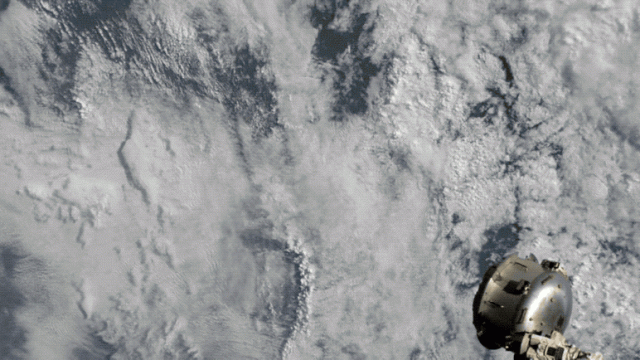Private space company Nanoracks has announced the successful first test of a new technology to get rid of trash from the International Space Station.
The International Space Station may seem glamorous, but astronauts aboard the orbital outpost still have to take out the trash. It’s currently a tedious and costly process, but Houston-based Nanoracks announced yesterday the successful test of a new waste management system that’s poised to significantly streamline the process.
On July 2, a highly-engineered trash bag holding 78 kilograms of ISS garbage was jettisoned from the space station and sent to its fiery doom in Earth’s atmosphere. It’s one small step for Nanoracks, but a giant leap for the future of celestial waste disposal. The test, conducted in partnership with NASA’s Johnson Space Centre, could represent a more efficient way for ISS astronauts to keep their house in order.

“Waste collection in space has been a long standing, yet not as publicly discussed, challenge aboard the ISS,” said Cooper Read, Nanoracks’ Bishop Airlock program manager, in a press release. “This was the first open-close cycle of the Bishop Airlock, our first deployment, and what we hope is the beginning of new, more sustainable ISS disposal operations,” said Nanoracks CEO Amela Wilson.
Indeed, the ISS has a trash problem. Astronauts currently store their garbage inside of resupply vehicles, namely the Cygnus freighter, which then get sent on journeys through Earth’s atmosphere where they burn up on reentry. But Nanoracks’ new system features a container mounted in the ISS’s Bishop Airlock where astronauts can fill a bag with up to 272 kg of garbage. The bag is then jettisoned from the airlock and sent towards Earth’s atmosphere for annihilation. Nanoracks claims that this new waste disposal method will not contribute to the creation of any space debris, but the company did not immediately reply to my request for comment on what the potential impact on the atmosphere might be.
Nanoracks isn’t particularly clear on what its next steps are for this new technology, but the company does mention that it is looking forward to how it can integrate this new system into future commercial low Earth orbit applications. In the release, Wilson stated that Nanoracks will continue its relationship with NASA, saying “we look forward to continuing this collaboration.”
Trash disposal is an oft overlooked part of an astronaut’s day-to-day life, but its role in the smooth operations of a space station is crucial to its long term success. As crewed missions reach further into our solar system — and beyond — the successful management of waste without the wasteful and costly use of resupply vehicles will be paramount.
